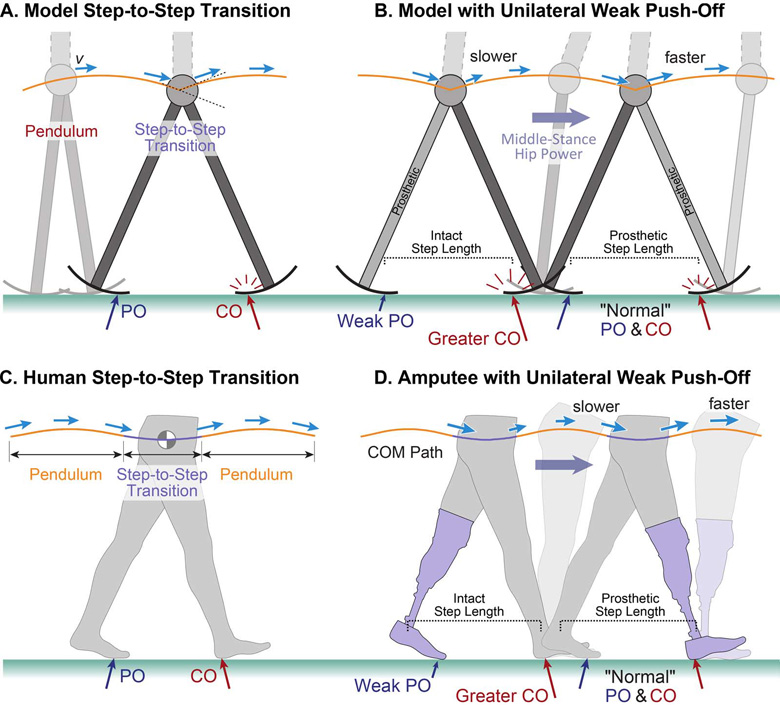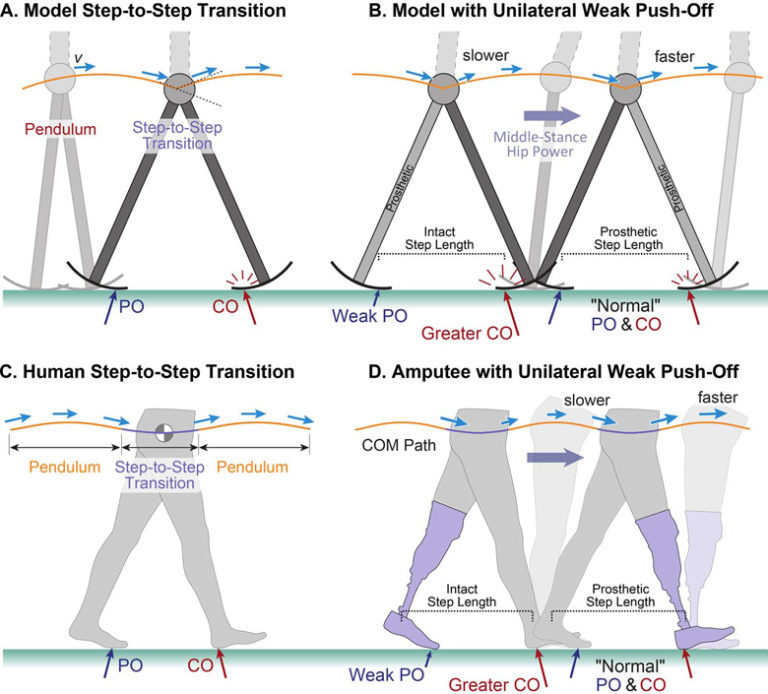
Unilateral lower-limb amputees exhibit asymmetry in many gait features, such as ground force, step time, step length, and joint mechanics. Although these asymmetries result from weak prosthetic-side push-off, there is no proven mechanistic explanation of how that impairment propagates to the rest of the body. We used a simple dynamic walking model to explore possible consequences of a unilateral impairment similar to that of a transtibial amputee. The model compensates for reduced push-off work from one leg by performing more work elsewhere, for example during the middle of stance by either or both legs. The model predicts several gait abnormalities, including slower forward velocity of the body center-of-mass during intact-side stance, greater energy dissipation in the intact side, and more positive work overall. We tested these predictions with data from unilateral transtibial amputees (N = 11) and nonamputee control subjects (N = 10) walking on an instrumented treadmill. We observed several predicted asymmetries, including forward velocity during stance phases and energy dissipation from the two limbs, as well as greater work overall. Secondary adaptations, such as to reduce discomfort, may exacerbate asymmetry, but these simple principles suggest that some asymmetry may be unavoidable in cases of unilateral limb loss.

